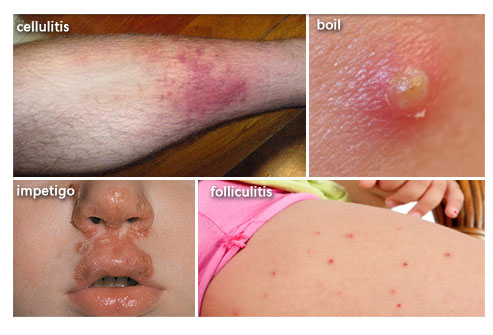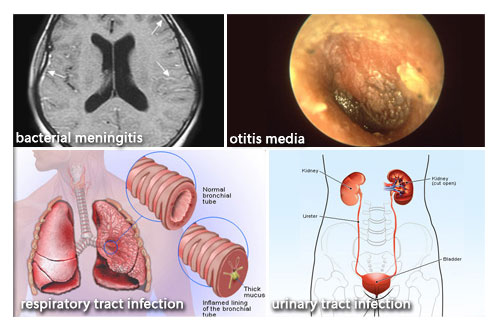BACK

Bacterial skin infections are usually caused by gram-positive strains of Staphylococcus and Streptococcus or other organisms. Common bacterial skin infections include:
causes a painful, red infection that is usually warm to the touch. Cellulitis occurs most often on the legs, but it can appear anywhere on the body.
Folliculitis is an infection of the hair follicles that causes red, swollen bumps that look like pimples. Improperly treated pools or hot tubs can harbor bacteria that cause folliculitis.
Impetigo causes oozing sores, usually in preschool-aged children. The bullous form of impetigo causes large blisters while the non-bullous form has a yellow, crusted appearance.
Boils are deep skin infections that start in hair follicles. Boils are firm, red, tender bumps that progress until pus accumulates underneath the skin.
Bacterial skin infections are treated with oral or topical antibiotics depending on the strain causing the infection.

Harmful bacteria can affect almost any area of the body. Other types of bacterial infections include:
- Bacterial meningitis is a severe infection of the meninges, the lining of the brain.
- Otitis media is the official name for an infection or inflammation of the middle ear. Both bacteria and viruses can cause ear infections, which commonly occur in babies and small children.
- Urinary tract infection (UTI) is a bacterial infection of the bladder, urethra, kidneys, or ureters.


